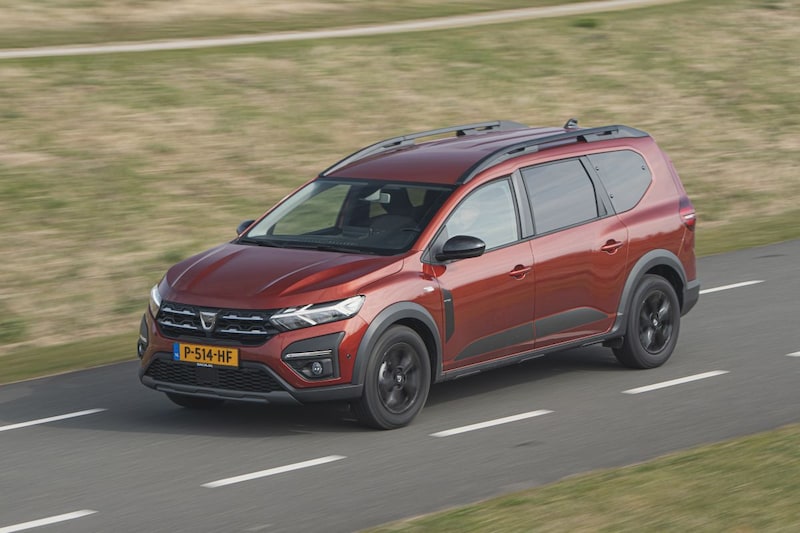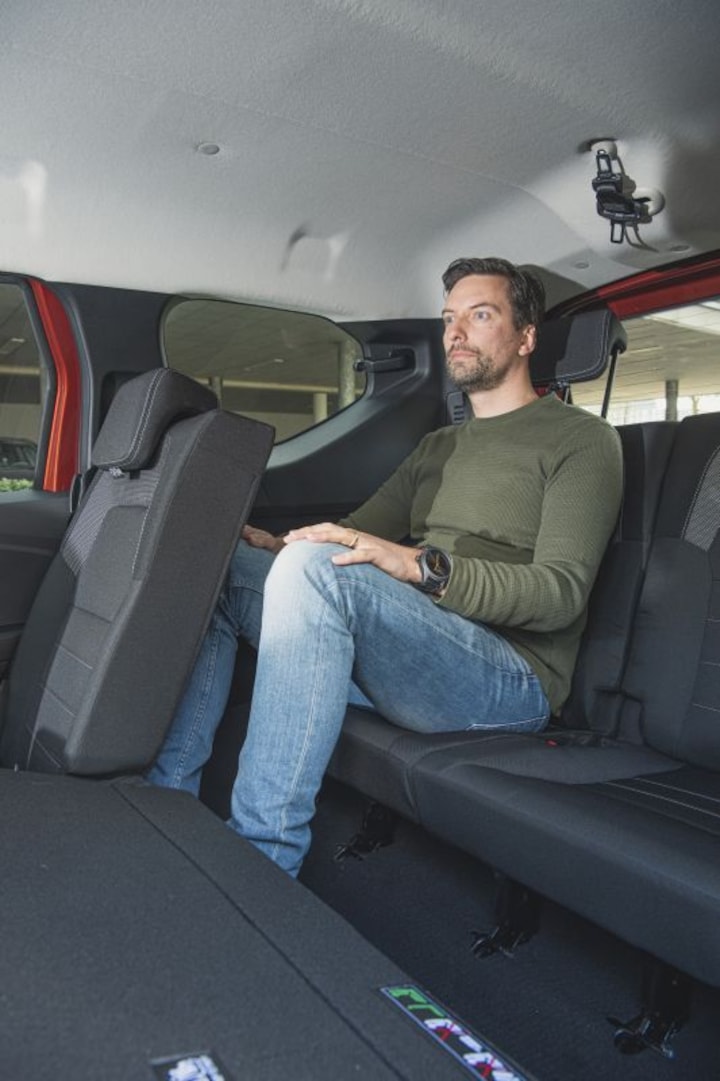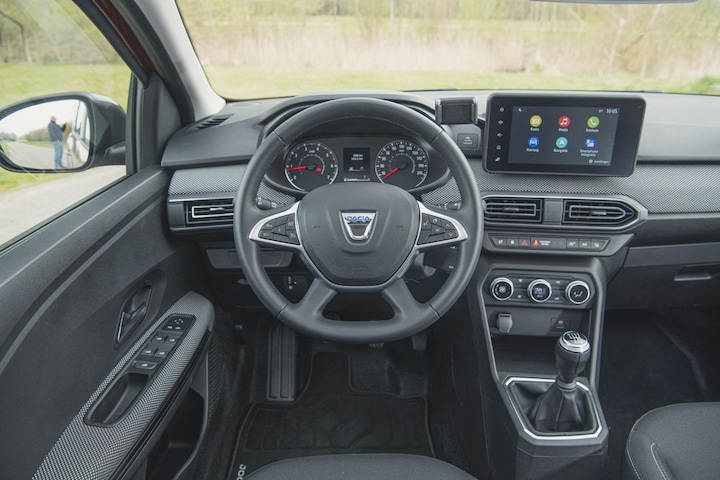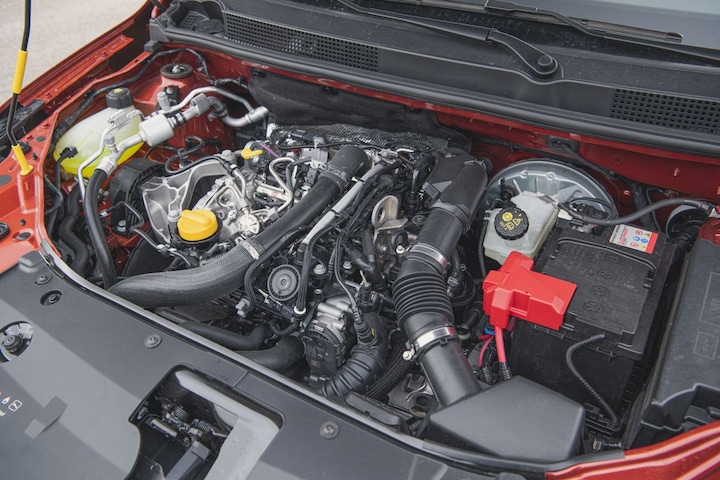Alone on the world

No car brand knows how to market the concept of ‘much for little’ as well as Dacia. With the new Jogger, the brand actually has no competitors. In this test we assess the razor – sharply priced Jogger TCe 100 Extreme as a seven – seater on its qualities .
What kind of car is the Dacia Jogger?
There are few car manufacturers who really have a good grasp of the concept of ‘for a dime in the front row’. Brands such as Skoda, Hyundai and Suzuki are still at the bottom of the market, but their cars are no longer really ‘basic’. Sometimes a car manufacturer tries to sell off a model that has not been developed for (Western) Europe. The quality is less, but then the price can remain nice and low, is the idea. A setup that usually fails hopelessly, just look at the Ford EcoSport, the Volkswagen Fox and the first generation of the Renault Koleos. The ‘thrifty’ Dutchman did not fall for it.
It is all the better that Dacia has managed to get a foot in the door with the Logan since 2005. For the price of a city car you got a car with the size of a middle class car. The Logan looked anything but pretentious, but the concept also caught on in the Netherlands. Dacia is now an established brand, with models such as the Spring, the Sandero and the Duster. The Jogger is the youngest model of the Romanian Renault subsidiary and has replaced the large Logan MCW. In short, it is the station wagon of the Sandero, but with a whopping 29.3 centimeters longer wheelbase and a body that has been roughed up with plastic wheel arches, for that little bit of off-road feeling. You can also see that the roof rises somewhat at the B-pillars, which benefits the head and luggage space. Although the Jogger shares its platform with the Renault Clio, the stretched wheelbase even offers space for seven occupants as an option.

A third row of seats is quite unique. One that you sit so well on as an adult all the way.
For a base price of less than €20,000, the Jogger is a unique offer, because the cheapest seven-seater after the Jogger is the (outdated) BMW 2-Series Gran Tourer, which you have as a bare 216i for around €35,000. Other cars that are offered as seven-seaters for less than 40 grand are the Seat Tarraco, Seat Kodiaq and Peugeot 5008. The Citroën Grand C4 Spacetourer is now out of production, but an unsold copy of this model may still be in stock at a dealer somewhere.
How much space does the Jogger have to offer?
The Jogger is available in two versions: as a five-seater and as a seven-seater. Our test car is equipped with a third row of seats, an additional investment of €1,000. And that makes it even a full-fledged seven-seater, because an adult is still quite comfortable in the Jogger all the way back. The main room is even impressive. You also have sufficient freedom of movement in the second row of seats. The amount of legroom is comparable to that of the Volkswagen Golf. However, you can’t slide the couch back for more legroom or forward for extra cargo volume – Dacia has to get that low price somewhere.
With all rows of seats in use, you still have more than 160 liters of luggage space left. If you do not use the last row of seats, you can fit 700 liters in the back and with all benches flat you go to 1,819 liters. And with that, the Jogger comes very close to an MPV such as the Citroën Grand C4 Spacetourer (1,843 liters). The Jogger is also good at towing heavy trailers: it can hold a braked weight of 1,200 kilos.
You are also fine in the front. The seating position is remarkably good, you can pull the steering wheel far towards you. You have a view of analog clocks. Certainly not disturbing, but now a rarity in new cars. We see digital clocks in most of the new models we test.
What does that competitive price mean for the equipment and finish?
The interior of the Jogger is made up of simple materials, but the hard plastic of the past has disappeared. The finish is in order and there was apparently enough financial space for a nice print here and there. There is even a strip of fabric on the dashboard, which makes the look a lot more attractive.

No excess, but clear.
In this test we discuss the top model from the price list, the Jogger TCe 110 Extreme with third row of seats, which has some nice extras such as heated seats, a multimedia system with navigation and an excellent audio system with six speakers. On the center console we recognize the climate control of the Renault Clio, which gives the Jogger an extra luxurious touch to Dacia concepts. To stream music via Apple CarPlay or Android Auto, you must pair the multimedia system with your smartphone. For that you get a handy phone holder and a USB connection right next to the display in the center console.
In addition to the Extreme version, the Dacia Jogger is also available as the simplest Essential (with 100 hp TCe BiFuel engine) and as the slightly more luxurious Expression, which serves as the basic version for the TCe 110. Parts that are not on the Essential, but on the Expression are cruise control, a light and rain sensor, air conditioning, electric windows in the front and rear and an 8-inch touch screen in the center console with support for Apple CarPlay and Android Auto. In the most complete Jogger, the Extreme, we also see a reversing camera, keyless entry and start button, 16-inch alloy wheels and mirror caps in high-gloss black.
And how does the Dacia Jogger drive?
We know the 110 hp three-cylinder turbo engine from the Renault Clio, and the six-speed manual transmission also comes from that car. The gearbox shifts in a familiar way: with short strokes that require a firm hand. Due to its early available torque, the engine knows how to handle the 1,158 kilo car, and even with a heavy load 110 hp is more than enough for this car. It takes little effort for the engine to flow with the other traffic. From standstill is in less than 12 seconds at 100 km/h, which is about a count and a half slower than the manufacturer. The average consumption also deviates significantly from the figures stated in the folder. Dacia says 1 in 17.9, our measurement comes out at 1 in 14.9.

The 1.0 is sufficiently powerful for the Jogger. The version on LPG is an easy choice.
To moderate the fuel costs somewhat, you can also opt for a Jogger with LPG installation. You only have to give up 10 horsepower for that. According to the Dacia papers, the engine would come to an average consumption of 1 to 18.1 on petrol and 1 to 14.3 on gas. There is 40 liters of gas in the tank, the petrol reservoir with a capacity of 50 liters is just as large as that of the version that runs on petrol only.
The tuning of the Jogger chassis is fairly firm. You also need that sturdiness when you set out with six to seven people on board. There are certainly cars that offer more suspension comfort, but the Dacia makes a more refined impression and has better handling than the Logan ever had. On long distances, the car is certainly not tiring, because the driving noises remain in the background and the seats are of good quality.
What do you have to hand in with the Dacia Jogger?
Where the Jogger mainly leaves points, is on the safety part. Euro NCAP, the European organization that assesses passenger car safety, has awarded the Jogger no more than one star, out of achievable five stars. This is not so much due to the results of the crash tests, but mainly to the limited possibilities in the field of advanced driver assistance systems (ADAS). The Jogger does have six airbags and an automatic emergency braking assistant that prevents collisions or limits damage, but that’s about it. Dacia does not offer active driver assistance systems such as lane departure warning, a fatigue assistant or adaptive cruise control at all.
The choice of AutoWeek test coordinator Marco Gorter
The price list of the Dacia Jogger is not very extensive, yet there are a number of choices to be made. It’s easy with the engine: the Bi-Fuel version is cheaper and can run on LPG, so that’s quickly earned. The third row of seats is a unique selling point, but costs €1,000 extra. Those who are mainly concerned with the enormous loading volume, may be better off omitting it. In the implementation, the Essential is very bare. The Expression is a nice middle ground, but since a reversing camera with such a large car is easy, the top version Extreme is a good choice to defend.
.
– Thanks for information from Autoweek.nl